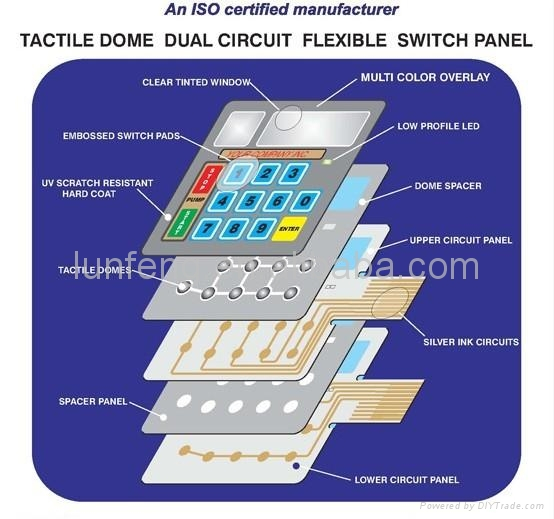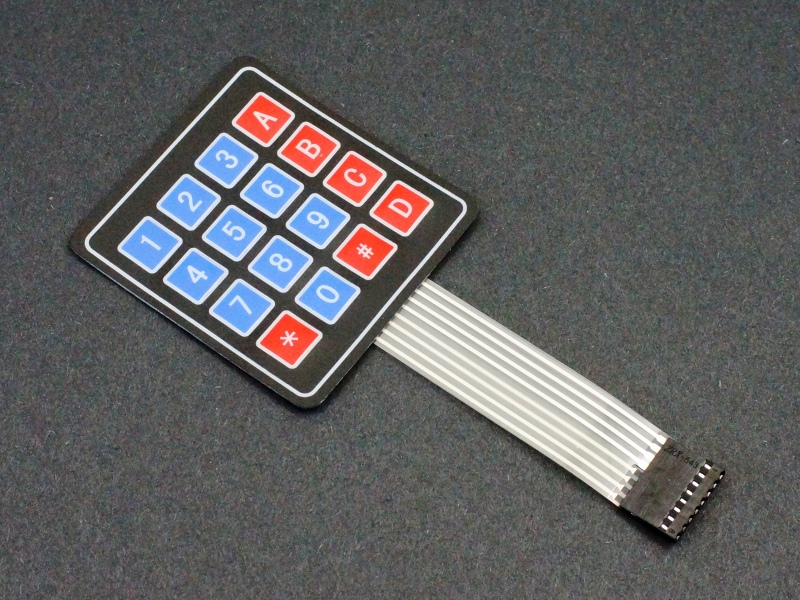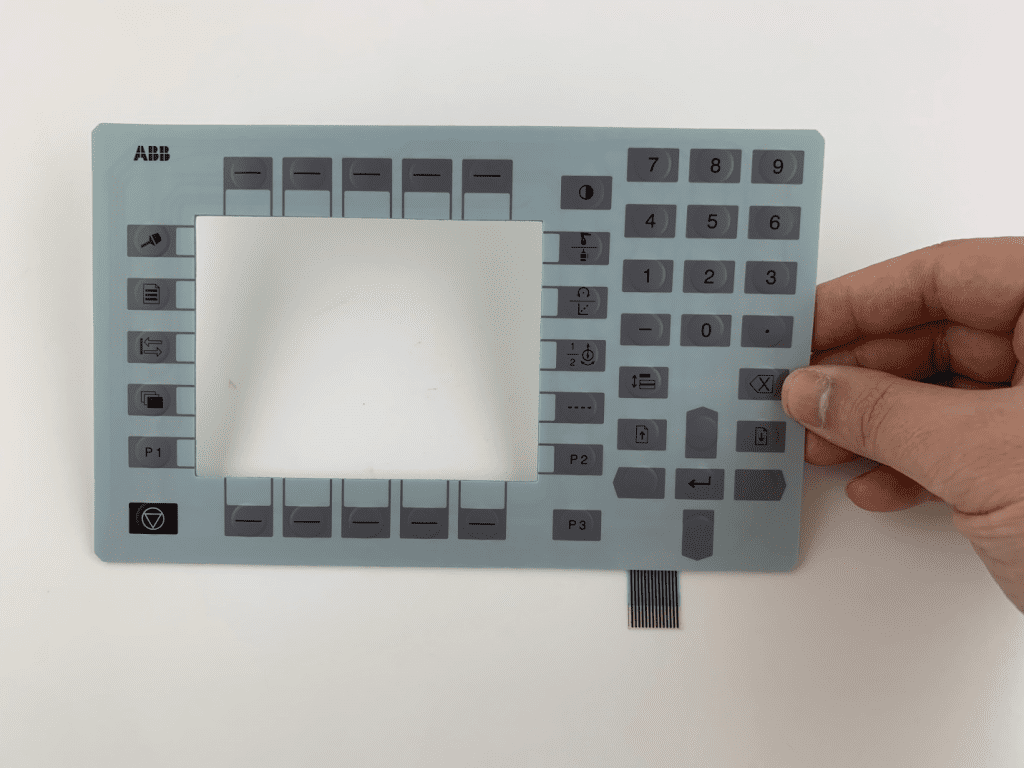Membrane Switches vs. Traditional Switches: What You Need to Know
Membrane Switches vs. Traditional Switches: What You Need to Know
Blog Article
Understanding the Relevance of Membrane Switches in Individual Interfaces
Membrane buttons are essential components in the design of efficient customer interfaces, facilitating not only capability yet also enhancing aesthetic charm and customer communication. As we discover the future patterns and different benefits linked with Membrane modern technology, it comes to be clear that these buttons are more than just components; they represent a convergence of development and functionality.
What Are Membrane Switches?

The spacer layer, which has glue residential properties, permits the separation of the circuit layer from the overlay, ensuring that the button continues to be in a non-activated state up until pressed. When stress is related to the overlay, it compresses the spacer layer, linking the void and completing the circuit in the underlying layer. This design not just minimizes the physical space needed for standard mechanical switches yet likewise enhances the durability of the tool, as Membrane buttons are normally resistant to dirt, moisture, and various other environmental variables.
Frequently found in applications varying from consumer electronic devices to medical tools, Membrane buttons are important to modern innovation, offering a straightforward and effective user interface that lines up with modern style needs.
Advantages of Membrane Switches
While many button innovations exist, Membrane Switches offer distinct benefits that make them especially preferable in various applications. Among the key benefits of Membrane buttons is their compact style, which enables space-saving implementations in tools where real estate is limited. Their slim account not only improves aesthetic charm yet likewise helps with light-weight construction.
One more substantial advantage is their resistance to environmental aspects. Membrane switches are usually secured versus moisture, dust, and pollutants, making them ideal for use in requiring settings, such as clinical devices and industrial devices. This longevity extends the lifespan of the switch, reducing upkeep prices and enhancing dependability.
In addition, Membrane switches can be personalized to satisfy certain layout needs, including unique graphics and colors that enhance user interaction. Their tactile feedback options can also be tailored to provide a rewarding user experience. Additionally, Membrane buttons are cost-effective, particularly in high-volume applications, as they can be generated successfully.
Applications in Various Industries

In the consumer electronic devices market, Membrane buttons are prevalent in tools such as microwaves, washing machines, and remotes. Their tactile responses and aesthetic options improve user experience while supplying a sleek, modern-day look. In addition, automobile manufacturers use Membrane switches in control panel controls and infotainment systems, where room is limited, and individual engagement is important.
Furthermore, the commercial sector leverages Membrane buttons in control panels for machinery and devices, permitting user-friendly procedure in frequently rough environments. Their resistance to chemicals and wetness ensures durability and integrity in these applications. Overall, the versatility of Membrane Switches contributes substantially to their prevalent use, making them vital in numerous technological domains.
Style Factors To Consider for Membrane Switches

When creating Membrane buttons, numerous vital considerations must be taken into consideration to make sure ideal capability and customer experience. The selection of products is essential; picking sturdy, high-grade substratums can boost the button's durability and resistance to environmental elements such as moisture and temperature fluctuations.
Second of all, the layout of the visuals overlay should prioritize quality and simplicity of use. Symbols and message helpful hints have to be clear, and the format needs to promote instinctive communication (membrane switches). Furthermore, tactile feedback is essential; including a responsive dome or other mechanisms can boost the individual experience by offering physical confirmation of activation
An additional essential factor is the button's electric performance. Developers should ensure that the conductive traces are effectively created to reduce resistance and avoid signal disturbance. This involves analyzing the needed actuation force and making sure compatibility with the electronic parts they will user interface with.

Future Patterns in Membrane Innovation
As modern technology continues to breakthrough, Membrane buttons are positioned to develop dramatically, driven by developments in products and manufacturing methods. One arising trend is the unification of advanced materials, such as versatile substratums and conductive inks, which enhance sturdiness and lower the overall weight of Membrane buttons. These products not only enhance the responsive feedback but likewise permit for the design of switches that can stand up to harsher ecological problems.
Furthermore, the combination of touch-sensitive modern technologies is changing traditional Membrane Switches into more interactive individual interfaces. Capacitive touch sensing units installed within Membrane button panels can provide a much more instinctive and receptive customer experience, aligning with the growing demand for sleek, contemporary styles in consumer electronics.
Furthermore, improvements in printing strategies, such as electronic and 3D printing, make it possible for quick prototyping and customization of Membrane switches. This flexibility allows manufacturers to respond more quickly to market demands and consumer choices.
Last but not least, sustainability is coming to be a substantial emphasis, with suppliers discovering check out here green products and procedures. As these patterns unfold, the future of Membrane modern technology assures improved performance, aesthetic appeal, and ecological duty, strengthening their function in advanced user interfaces throughout different markets.
Conclusion
In verdict, Membrane Switches represent a crucial component in the style of customer interfaces, integrating capability with aesthetic adaptability. As advancements in innovation continue, the development of Membrane buttons is anticipated to more fine-tune individual interfaces, driving innovation and boosting functionality in an increasingly complicated technical landscape.
Membrane buttons are important elements in the design of efficient customer interfaces, facilitating not only capability but also improving visual allure and user interaction.Membrane Switches offer as a vital component in different individual interfaces, promoting a seamless interaction between individuals and electronic gadgets.While countless button technologies exist, Membrane Switches offer unique advantages that make them especially preferable in numerous applications.In addition, Membrane buttons can be customized to meet specific design requirements, integrating distinct graphics and colors that improve individual interaction.In final thought, Membrane Switches represent a vital component in the design of user interfaces, combining functionality with aesthetic flexibility.
Report this page